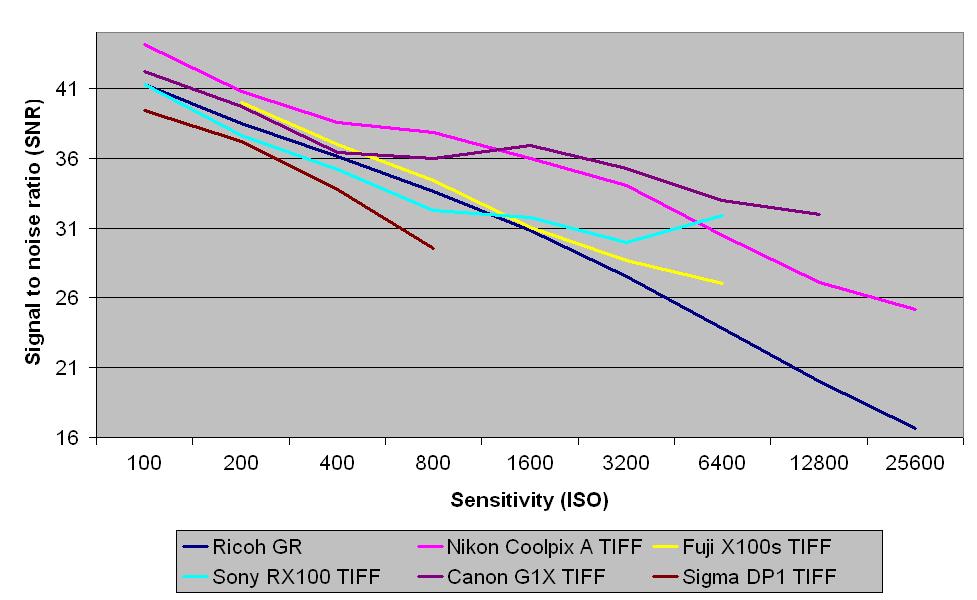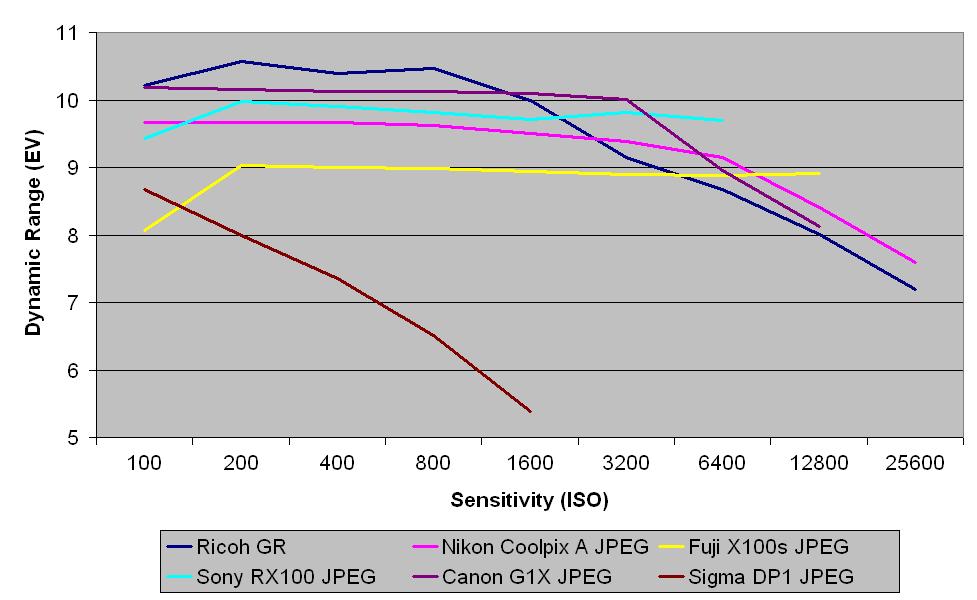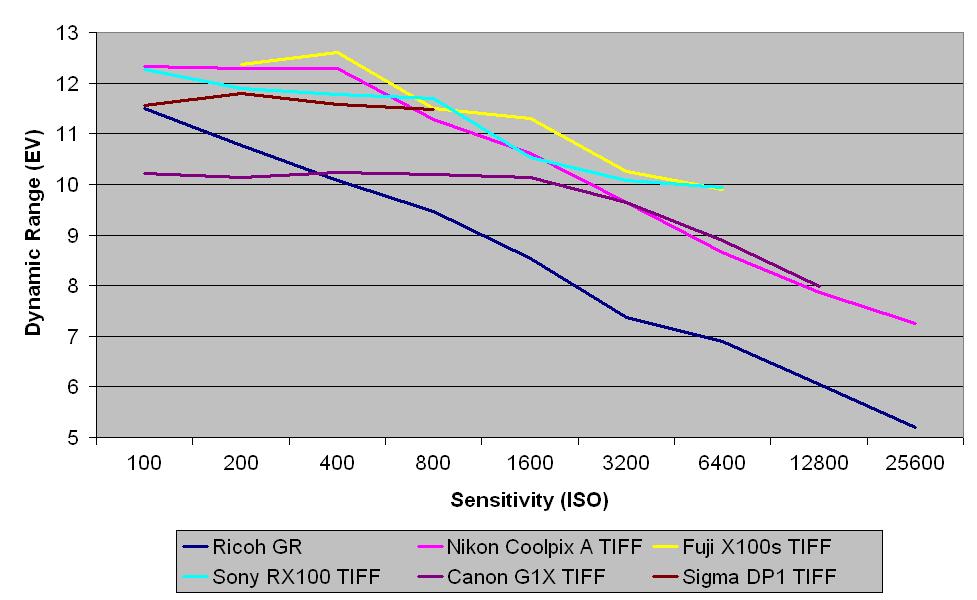Why you can trust TechRadar
We shoot a specially designed chart in carefully controlled conditions and the resulting images are analysed using DXO Analyzer software to generate the data to produce the graphs below.
A high signal to noise ratio (SNR) indicates a cleaner and better quality image.
For more more details on how to interpret our test data, check out our full explanation of our noise and dynamic range tests.
Here we compare the Ricoh GR with the Sony RX100, Nikon Coolpix A, Canon G1 X, Fuji X100S and Sigma DP1.
JPEG signal to noise ratio

These results show that JPEG images from the Ricoh GR have similar signal to noise ratios to those from the Sony RX100, Nikon Coolpix A, Canon G1 X and Fuji X100S throughout the sensitivity range. The Ricoh's images come out slightly ahead of all the others at ISO 100 and 200, slightly behind the Fuji but ahead of the others at ISO 400 and 800, slightly behind the Fuji, Sony and Canon at ISO 1600-6400 and slightly behind the Fuji but ahead of the others at the top ISOs. The Ricoh GR and other camera's JPEGs have significantly stronger signal to noise ratios than the Sigma DP1's, at every sensitivity setting.
Raw signal to noise ratio

The signal to noise ratios of the TIFF images (after conversion from raw) from the Ricoh GR are less changeable than those from its JPEGs, with the Ricoh's TIFFs containing stronger ratios than those from the Sigma DP1 at every sensitivity setting, and from the Sony RX100 at ISO 100-800, though after that the Sony's TIFFs are stronger. The Fuji X100S's TIFFs have similar signal to noise ratios to the Ricoh GR's, but are slightly stronger, while the Nikon Coolpix A and Canon G1 X's TIFFs have greater signal to noise ratios than the Ricoh GR's.
It seems that Ricoh has opted to produce slightly noisier images to allow more detail to be visible.
Sign up for breaking news, reviews, opinion, top tech deals, and more.
JPEG dynamic range

JPEG results for dynamic range compare better than those for signal to noise ratio, with the Ricoh GR's JPEGs having a greater dynamic range than all the other cameras' at ISO 100-800, and once again outperforming those from the Sigma DP1 at every sensitivity. The Ricoh GR's JPEGs have greater dynamic range than the Canon G1 X's at ISO 100-800, but at ISO 1600 and above the Canon's images are stronger. Similarly, the Ricoh's JPEGs have greater dynamic range than the Sony RX100's at ISO 100-1600, but fall behind at ISO 3200 and 6400, which is as far as the Sony's range extends. It's the same story with the Nikon Coolpix A's images, except that the Nikon's JPEGs continue to beat the Ricoh's from ISO 3200 to 25600. The Ricoh's JPEGs beat the Fuji X100S's at every sensitivity but ISO 6400 and 12800.
This indicates that the GR's JPEGs can reproduce a greater range of tones than the competing cameras at the lower to mid sensitivity range.
Raw dynamic range

This chart indicates that the Ricoh GR's TIFF images (after conversion from raw) have a lower dynamic range then those from the Sony RX100, Nikon Coolpix A, Fuji X100S and Sigma DP1 at every sensitivity setting, although the Sigma's are very similar to the Ricoh's at ISO 100. The Ricoh GR's TIFFs contain greater dynamic range than the Canon G1 X's at ISO 100 and 200, but fall behind at ISO 400 and above.
Current page: Noise and dynamic range
Prev Page Image quality and resolution Next Page Sample images